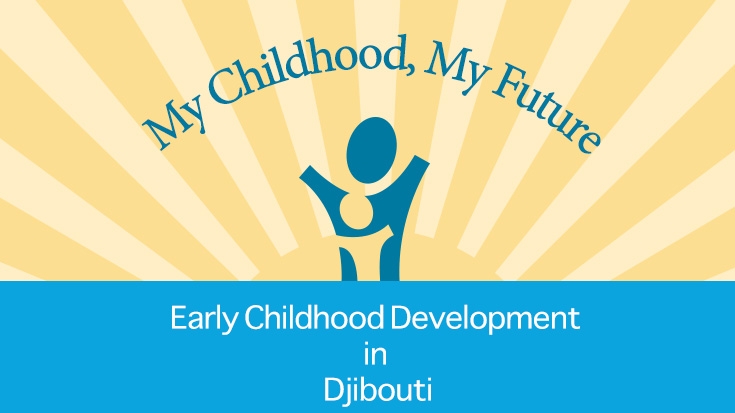The status of Early Childhood Development (ECD) in Djibouti
- Prenatal and delivery care are widespread, reaching almost 90% of recent births.
- Child mortality remains high, with 60 out of 1000 children dying before their first birthday.
- Less than a third of children are fully immunized by age 1.
- A third of children are stunted and 30% are underweight.
- No children (0%) have access to iodized salt, putting them at great risk of impaired cognitive development.
- Children are more likely to be engaged in child labor than in early childhood education.
- More than a third of children face violent discipline.
- Only 37% of children are engaged in childhood development activities.
Figure 1. Early childhood development indicators for Djibouti (%)
Source: Authors’ calculations based on Djibouti MICS 2006 and Djibouti PAPFAM 2012
Children in Djibouti face very different opportunities for healthy development based on factors beyond their control.
There are substantial differences in the opportunities children have to fulfill their potential or accumulate human capital. Early childhood is when cycles of poverty and inequality are transmitted across generations. Children tend to be consistently advantaged or disadvantaged across a variety of different dimensions of ECD, and can face very different life chances based on just a few family background characteristics. If we observe a child who lives in a rural area or other non-urban district, in the poorest 20% of households, with uneducated parents (a “least advantaged” child) and compare that child to one who has parents with secondary or higher education, is from the richest 20% of households, and lives in an urban part of Djibouti district (a “most advantaged” child), we find they have different chances of healthy early childhood development. Figure 2 presents the chances (predicted chance) of different ECD indicators (based on regressions) for these “least advantaged” and “most advantaged” individuals.
On almost every indicator, the least advantaged child has a poorer chance of healthy development. Comparing the least and most advantaged, the gap in prenatal care is 38 percentage points, and the gap in having a trained attendant at delivery is 54 percentage points. The least advantaged child is more likely to die in the first month or year of life, and 5 percentage points less likely to be immunized, 21 percentage points more likely to suffer from stunted growth, 29 percentage points more likely to be underweight, and 18 percentage points more likely to be wasted. There is a 37 percentage point gap in experience of childhood development activities, with the most advantaged child more than twice as likely to experience them. The largest relative difference is in Early Childhood Care and Education (ECCE), where the most advantaged child is seven times more likely to attend ECCE than the least advantaged child. The least advantaged child is also more than twice as likely to be engaged in child labor, but less than half as likely to be violently disciplined.
Figure 2. Inequality in the chances for healthy early childhood development (%)
Source: Authors’ simulations of chances for a “most advantaged” and a “least advantaged” child based on calculations using Djibouti MICS 2006 and Djibouti PAPFAM 2012


